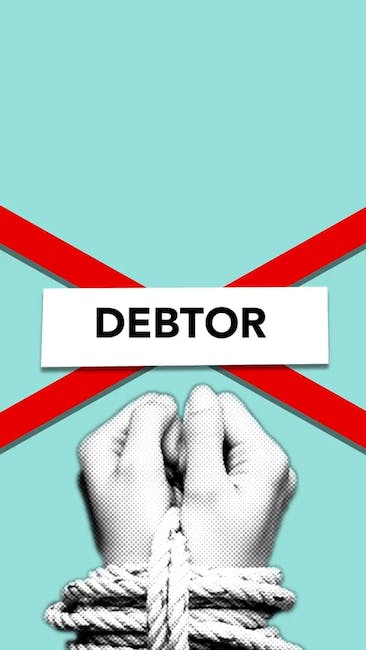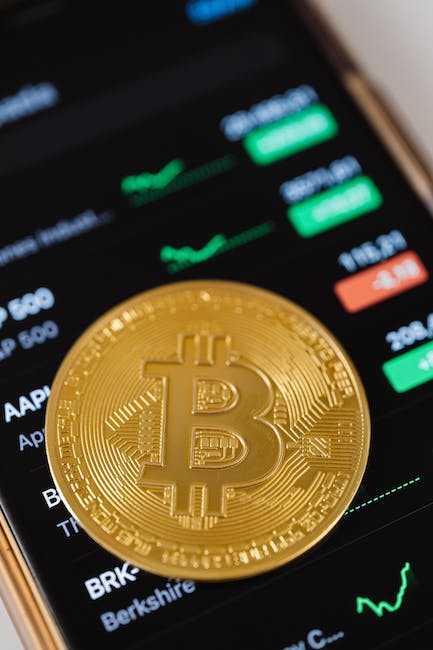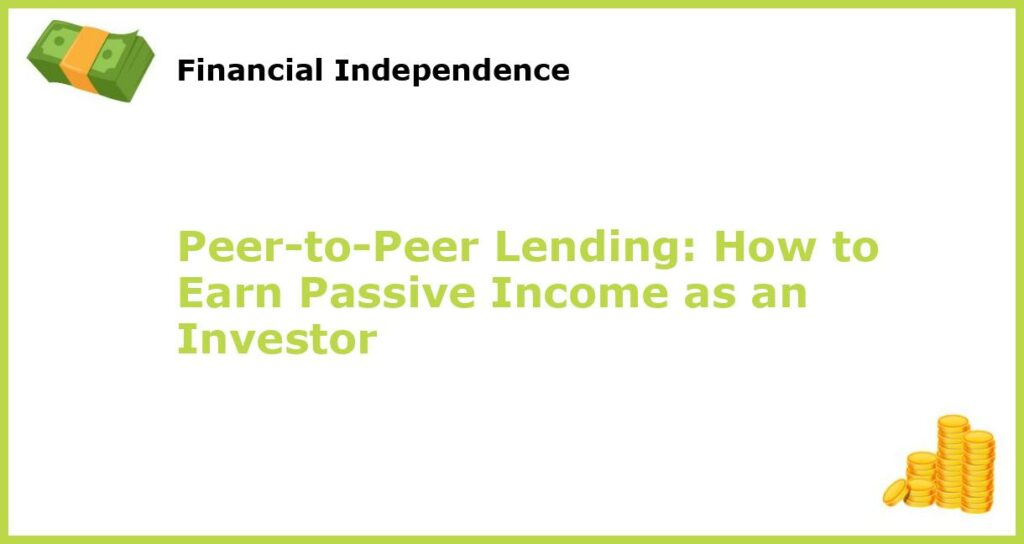The rise of technology and innovation has given birth to new forms of investments that have revolutionized the financial sector. One such investment is peer-to-peer (P2P) lending, which is transforming borrowing and lending habits. Peer-to-peer lending platforms create a bridge between borrowers and lenders, enabling a seamless lending and borrowing process. For investors, P2P lending presents an opportunity to earn passive income and diversify their investment portfolio. In this article, we will cover everything you need to know about P2P lending and the considerations you must make before investing.
What is Peer-to-Peer Lending?

Peer-to-Peer lending, also known as P2P lending, is a type of investment that connects borrowers with investors through a platform. Unlike traditional lending where a bank acts as an intermediary, P2P lending allows individuals to lend and borrow money from each other directly. The process is typically facilitated by an online lending platform, which matches borrowers and lenders based on criteria such as loan amount, interest rate, and loan duration. P2P lending, therefore, eliminates intermediaries, lowering fees, and rates borrowers pay, while providing an opportunity for investors to earn attractive returns.
How Does Peer-to-Peer Lending Work?

On a P2P lending platform, borrowers submit their loan application along with the amount they need and the intended purpose of the loan. Investors can browse through loan applications and choose to fund a portion or the entire loan. The borrower then repays the loan with interest over a set period of time. The lending platform usually charges a fee for matching borrowers and investors and for servicing the loan on behalf of both parties. P2P lending platforms differ in their credit assessment, borrower verification processes, and default mitigation strategies, but the basic process remains the same.
What are the Benefits of Investing in Peer-to-Peer Lending?

One of the main benefits of investing in P2P lending is the potential for higher returns compared to traditional investments like stocks and bonds. P2P lending has lower overhead costs and fees than traditional banking, which means that investors can earn higher returns than they would through traditional investments. Additionally, P2P lending provides investors with the opportunity to diversify their portfolio and earn passive income with relatively less effort. It also provides borrowers with access to funding when they might not be able to get loans through traditional banking channels for reasons such as bad credit, among others.
What are the Risks of Investing in Peer-to-Peer Lending?

As with any investment, there are risks associated with P2P lending, which can lead to the loss or reduction of returns. One of the main risks is the potential for borrowers to default on their loans, resulting in investors losing some or all of their investment. The other risk is the lack of FDIC insurance for P2P loans, which means investors are not protected if the P2P platform fails. Investors may also be exposed to macroeconomic factors and market risks such as changes in interest rates and fluctuations in yield, which makes P2P lending not suitable for every investor.
How Can Investors Mitigate the Risks of Peer-to-Peer Lending?

Investors must research and select P2P platforms carefully and diversify their investment across multiple loans and different borrowers with various risk profiles. Diversification can help spread the risk throughout the portfolio, mitigating the effects of a single loan default. Researching P2P platforms is essential to understanding the platform’s default management processes, assessment, loan terms, and fees. Investors should also understand how loans are underwritten and the platform’s history of loan performance. Ultimately, diversification and research work together to mitigate the risk of loss in P2P lending.
What are the Types of Loans Available on Peer-to-Peer Lending Platforms?

There are various types of loans available on P2P lending platforms, including personal loans, business loans, and real estate loans. Personal loans are usually unsecured and have higher interest rates, while business loans and real estate loans usually require collateral and have lower interest rates. Personal loans are often used for emergency expenses, consolidating high-interest credit card debt, among others, while business loans can be useful for startups and small businesses that need capital for growth or expansion. Real estate loans are useful for investors who want to purchase a property or finance a real estate project, such as renovation or flipping.
What are the Requirements for Investing in Peer-to-Peer Lending?

The requirements for investing in P2P lending depend on the platform, but most platforms require investors to have a minimum amount of capital to invest and meet certain income or net worth standards. Investors must also be residents of the United States and be over 18 years old. Some platforms have additional requirements, such as providing employment verification or conducting a credit check. Investors should understand these requirements carefully before investing in a P2P platform.
How Can Investors Determine the Best Peer-to-Peer Lending Platform?

When choosing a P2P lending platform, several factors should be considered. The platform’s track record of successful loan originations and returns is one of the most important factors. The investor should also consider the fees charged by the platform, the minimum investment required, and the level of transparency offered. A platform with an active secondary market, automatic investing features, and a dedicated customer service system is also preferable. Additionally, investors should consider reading reviews and doing a platform comparison to choose the P2P lending platform that meets their investment goals.
What is the Future of Peer-to-Peer Lending?
The future of P2P lending is bright given the increasing demand for alternative financing, access to big data, and fast-evolving fintech solutions. P2P lending platforms are continually evolving to reduce the risk of default and provide competitive returns to investors. The market has seen increasing institutional investor interest in P2P lending, which will enhance the stability and liquidity of the P2P lending ecosystem. The future of P2P lending is promising, as the industry shows an enhanced understanding of borrowers’ needs and the production of innovative market offerings.
How Can Investors Get Started with Peer-to-Peer Lending?
Getting started with P2P lending is easy; the investor must identify a reputable P2P lending platform, open an account, and transfer funds to the platform. The investor should then select a portfolio of loans with different risk levels and loan durations that fit their investment goals. Investors can then monitor loan repayment and reinvest their earnings across various loans, and avoid investing more than they can afford to lose. Investors are encouraged to read the platform’s terms and conditions carefully to avoid any surprises or misunderstanding that might lead to additional costs.







